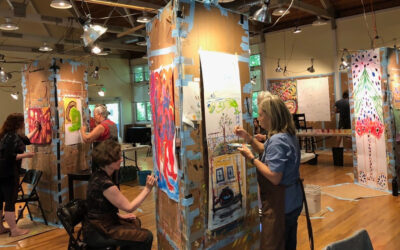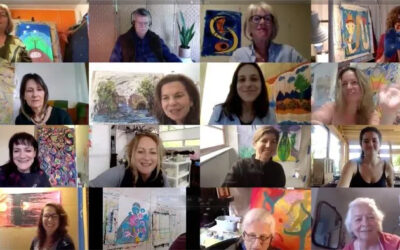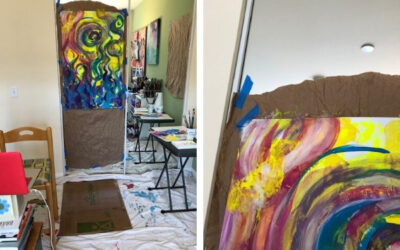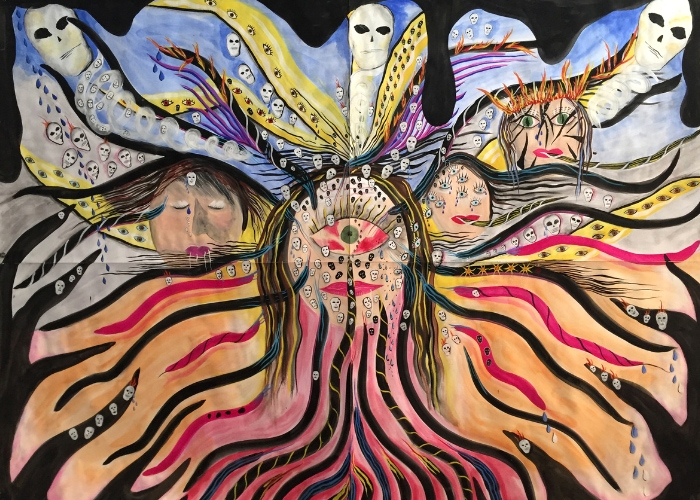
After so many years of painting, somehow it really hit me that from the moment we start a painting, impermanence starts, too.
I began painting with The Painting Experience in the mid-1980s. After that, I started a meditation practice, studying Buddhist principles and psychology. I took a long break from painting and when I began again in 2012—by that time having a long-established mediation practice—I noticed a big difference. Qualities from my meditation practice synchronized with many of the process arts principles—like not judging, not knowing, being in the present moment, intuitive listening, respecting what is, acceptance and beginner’s mind. A door opened and I’ve been painting with this combination of influences for about six years now. They continue to surprise me.
A few weeks ago, during an online painting session, I discovered something new about impermanence in the painting process. I thought my painting was almost finished, but that wasn’t true at all. Suddenly, what I thought would be faces appeared. But when I started to paint them, they turned out to be skulls. As I got into painting the skulls, I realized that in process painting, nothing ever stays the same. I felt very liberated: Don’t get so attached to what you’re painting, it’s going to change anyway!
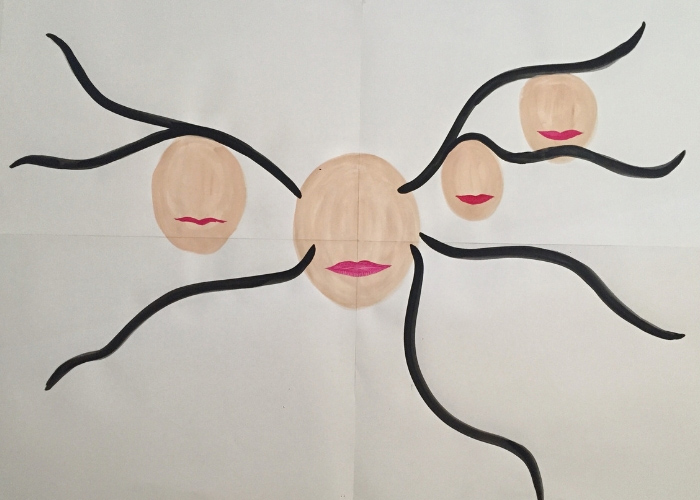
After so many years of painting, somehow it really hit me that from the moment we start a painting, impermanence starts, too. Like a sand painting created by Buddhist monks—they take great care in creating the sand painting, then they destroy it at the end. The feeling that comes when I’ve watched that process is profound: Wait, you just spent all that time and tremendous care to create that beautiful piece/peace of art and now it’s nothing but grains of sand again? It makes the ego go a bit crazy, just like in the painting process!
There is something so powerful about painting in the present moment, remaining willing for things to change: What I like will change, what I hate will change, what I thought I was painting will change, the size can change, the feelings will change all on their own. That’s the beauty of painting this way. I just have to get out of the way for the process to go through me while I’m holding the brush.
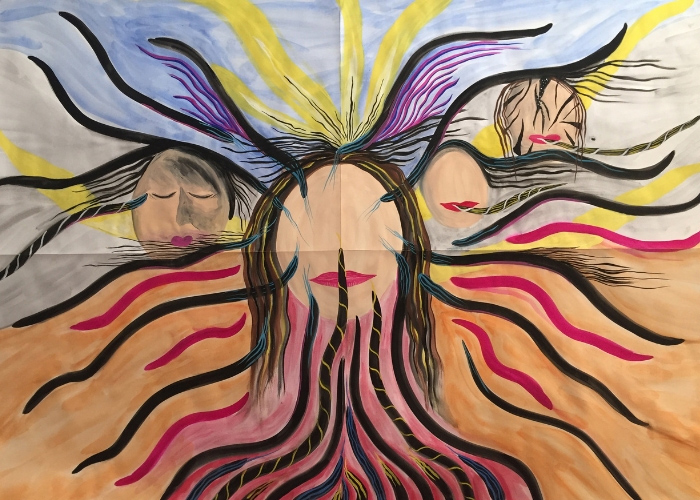
Stewart talks about how painting through difficult states can open doors. The door to this new understanding of impermanence opened through a painting that was at first disturbing for me—so much that I had to cover it when I wasn’t painting. Usually I like being with my paintings in between sessions, but not this one, at least not in the beginning. By the time the painting was finished, however, I was able to embrace it and accept the disturbance it had conjured up; at the end a glow radiated out from behind the head of the central figure that lead me to my next painting. That’s something I never would have thought about: a glow behind the disturbance.
Completing this painting brought a new sense of impermanence as I folded it up and put it away with more than one hundred other paintings. Folding up a painting is just the next step before facing the void and starting again. But, as with many paintings, the lessons of this painting had entered my life—and my life lessons also entered the painting.
This lesson about impermanence is a simple truth but it’s had great impact. It has the ability to keep me at the edge of my experience in a positive way. I’m looking forward to exploring this new awareness when I’m painting, because I’ve painted many paintings over all these years with a great deal of attachment. I’ve wanted things to turn out a certain way. It will be interesting to paint knowing that this painting—and this life—will change.
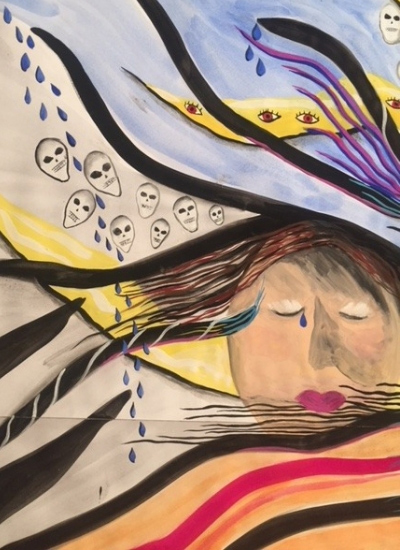
More Information
For more about daring to open to what arises in the moment, see Stewart Cubley’s article Radical Innocence.
To find out about opportunities to participate in The Painting Experience, see our schedule of upcoming process painting workshops and online painting classes.
Denise Bardovi has been a body-oriented psychotherapist for almost 30 years. She started studying and practicing meditation in 2007, beginning with Mindfulness-Based Stress Reduction (MBSR) with Christiane Wolf for Chronic Illness and Pain Management, which had a profound impact on her life. In 2014, Denise completed the Teacher’s Practicum for MBSR. Denise has been painting with The Painting Experience since 1986 and is also participant in Stewart Cubley’s course, Introduction to Facilitating Process Arts.

